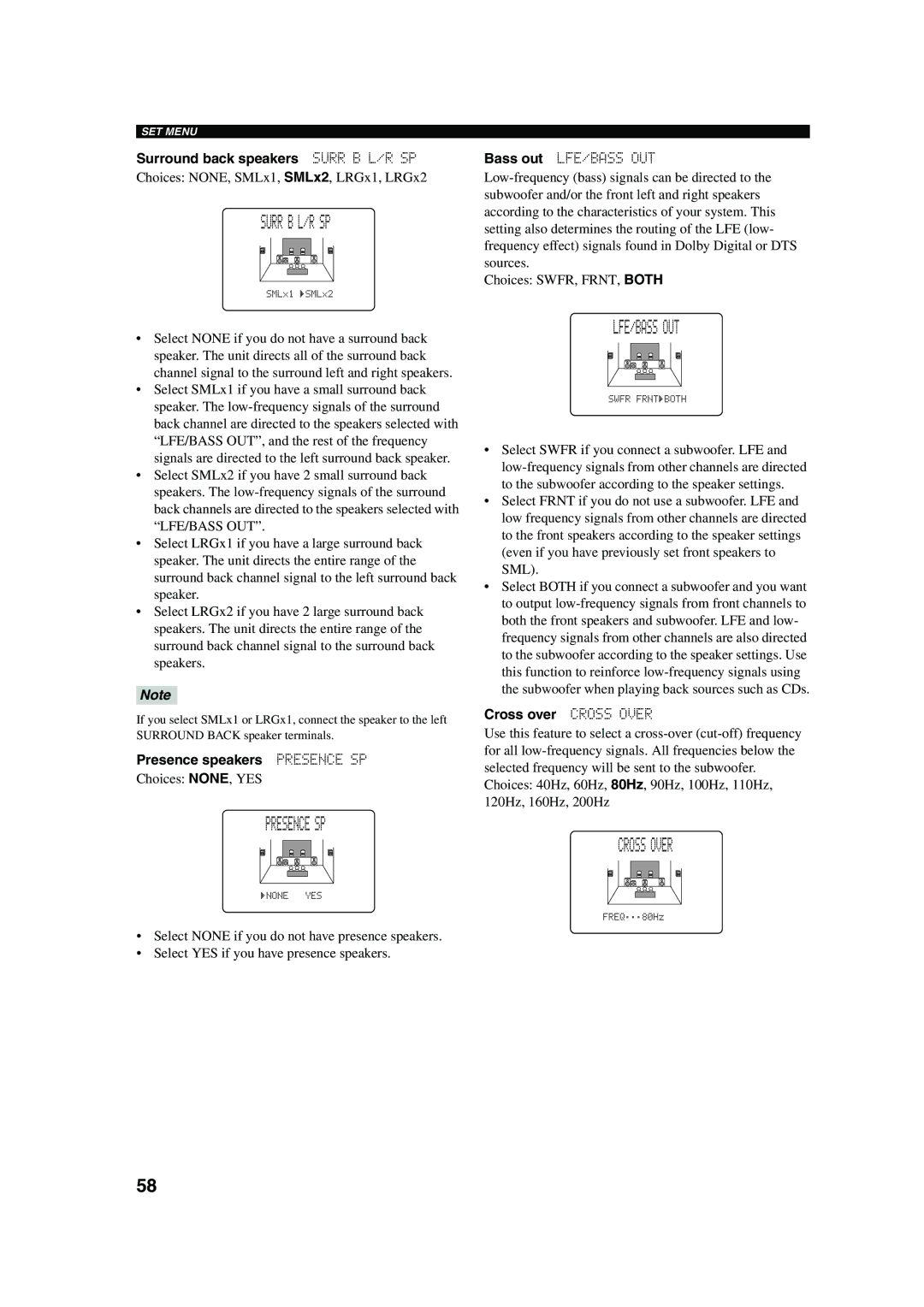DSP-AX750SE specifications
The Yamaha DSP-AX750SE is a high-performance audio receiver designed to deliver an immersive home theater experience. Launched as part of Yamaha's renowned lineup of surround sound receivers, the DSP-AX750SE combines advanced technology with user-friendly features, making it a popular choice for both audio enthusiasts and casual listeners.One of the standout features of the DSP-AX750SE is its impressive audio processing capabilities. Equipped with a powerful DSP (Digital Signal Processor), the receiver supports a variety of surround formats, including Dolby Digital and DTS. This allows users to enjoy a multi-dimensional sound experience, whether they're watching movies or listening to music. The unit can handle up to 7.1 channels, delivering rich and immersive audio that fills any room.
The DSP-AX750SE boasts Yamaha's unique Cinema DSP technology, which simulates the acoustics of various listening environments. With multiple preset sound fields, users can select different modes to enhance their audio experience based on the type of content they’re enjoying, whether it’s a concert, movie, or sports event. This feature stands out in creating a cinematic atmosphere, allowing listeners to feel as if they are part of the action.
Another significant characteristic of the DSP-AX750SE is its versatility in terms of connectivity. The receiver is equipped with multiple inputs and outputs, including HDMI ports, allowing for a seamless connection to modern devices such as Blu-ray players, gaming consoles, and streaming devices. The inclusion of both digital coaxial and optical inputs further enhances its compatibility with various audio sources.
For those who appreciate high-resolution audio, the DSP-AX750SE also supports PCM signals for high-definition sound formats. It comes with a built-in AM/FM tuner, enabling users to enjoy their favorite radio stations. The unit also features a robust power amplifier section, ensuring clean and dynamic audio reproduction even at higher volume levels.
User-friendliness is another key design element of the Yamaha DSP-AX750SE, with an intuitive on-screen menu system that simplifies navigation and setup. The remote control is designed to provide easy access to various functions, allowing users to tweak settings on-the-fly without hassle.
In conclusion, the Yamaha DSP-AX750SE is a feature-rich audio receiver that excels in enhancing the home theater experience. With its advanced processing technologies, versatility in connectivity, and user-friendly design, it is well-suited for anyone looking to create an exceptional audio environment. Whether for movie nights or music playback, the DSP-AX750SE remains a reliable choice for high-performance sound.

